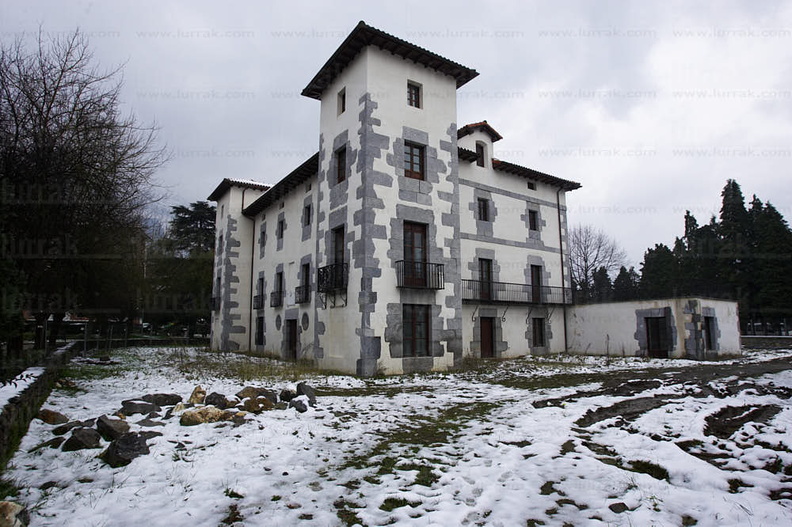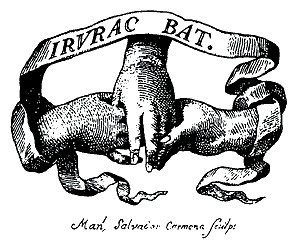Linked to the Enlightenment movement, the Royal Basque Society of Friends of the Country (Real Sociedad Bascongada de los Amigos del Pais), Euskalerriko Adiskideen Elkartea in basque (Euskera), was founded in 1764 and has its origins in gatherings held at the Intsausti Palace in Azkoitia, by the Count of Peñaflorida, Xavier Mª de Munibe.
With the help of a group of enlightened figures, Peñaflorida developed the Plan for an Economic Society or Academy of Agriculture, Sciences, Useful Arts, and Commerce. This project was presented to the «General Assemblies of Gipuzkoa», the territory’s parliament, in 1763; its authors had a particular interest in promoting the economy of their surroundings.
Due to its outstanding results, this organization became one of the main and pioneering research and science institutions of its time. Currently, its essential activity is to delve into the history and culture of the Basque Country, cultivate the basque language, promote economic development, and disseminate science and culture among the Basque people.

Its main headquarters are in Azkoitia (Gipuzkoa) and it has branches in Bilbao (capital of Bizkaia), Donostia-San Sebastián (capital of Gipuzkoa), Vitoria-Gasteiz (capital of Araba-Álava), Madrid (capital of Spain), and Mexico City (capital of Mexico).
In the premises of this institution, the brothers Fausto and Juan José D’Elhuyar achieved the isolation of tungsten, the only chemical element discovered in Spain and the first chemical element to be isolated in the world, without being directly extracted from nature, as it does not exist in free form without chemical combination. Fausto Fermín De Elhuyar (1755-1833) and Juan José De Elhuyar (1754-1796) were in charge of the ‘Laboratorium Chemicum’ of the Royal Basque Society of Friends of the Country: in their research, they started from wolframite (the generic name for a group of tungsten minerals such as iron tungstate or ferberite and manganese tungstate or hübnerite). By reduction with carbon, on September 28, 1783, they obtained the new metal, which they called volfram; currently known as tungsten.
Tungsten is a metal with great strategic value.
The extremely high density and hardness of tungsten (just behind diamonds), as well as the highest melting temperature of all metals (3,410 ºC), make it useful in very resistant alloys. It is also used in vacuum and X-ray tubes, as well as in metal evaporation. It is used in coils and other heating elements of electric furnaces that require working at high temperatures and being resistant to corrosion. Moreover, it is used in the military field, aerospace industry (engines and rockets), chemical catalysis, mobile phones, circuit boards, dental instruments, and various means of transportation such as trains or airplanes. Furthermore, it is used to manufacture the tip of pens, subjected to great wear, pressure, and effort. Tungsten has also been selected as the most appropriate material for future nuclear fusion reactors. As well as, tungsten carbide which is used due to its hardness as a cutting material for all types of metals in lathes, mining, public works, and oil drilling.
On the whole, due to its multiple and diverse uses, the European Union has included tungsten in the list of critical raw materials; meaning those with great economic importance and a high risk of supply shortage. Current European production, which is 2.8% of global production, is concentrated mainly in Spain, Portugal, and Austria and is still obtained by the procedure developed by the De Elhuyar brothers.
+Info: bascongada.eus

Los hermanos D’Elhuyar, el descubrimiento y aislamiento del wolframio
Vinculada al movimiento de la Ilustración, la Real Sociedad Bascongada de los Amigos del País, ‘Euskalerriko Adiskideen Elkartea’ en lengua vasca-euskera, fue fundada en 1764 y tiene su origen en tertulias celebradas en el palacio de Intsausti, en Azkoitia, bajo el impulso del ‘Conde de Peñaflorida’, Xavier Mª de Munibe.
Junto con un grupo de personajes ilustrados, Peñaflorida elaboró el Plan de una Sociedad económica o academia de agricultura, ciencias y artes útiles y comercio. Este proyecto se presentó a las «Juntas Generales de Gipuzkoa», parlamento del territorio, en 1763; sus redactores tenían especial interés por el fomento de la economía de su entorno.

Por sus sobresalenete resultados, esta organización fue una de las principales y pioneras instituciones de investigación y ciencia de su tiempo. Actualmente, su actividad esencial es profundizar en la historia y la cultura del País Vasco, cultivar la lengua vasca, promover el desarrollo económico y divulgar la ciencia y la cultura entre el pueblo vasco.
Tiene su sede principal en Azkoitia (Gipuzkoa) y cuenta con delegaciones en Bilbao (capital de Bizkaia), Donostia-San Sebastián (capital de Gipuzkoa), Vitoria-Gasteiz (capital de Araba-Álava), Madrid (capital de España) y Ciudad de México (capital de México).
En las dependencias de esta institución los hermanos Fausto y Juan José D’Elhuyar consiguieron el aislamiento del wolframio (tungsteno), único elemento químico descubierto en España y primer elemento químico en ser aislado en el mundo, sin ser extraído directamente de la naturaleza, ya que no existe en forma libre sin combinar químicamente.
Fausto Fermín De Elhuyar (1755-1833) y Juan José De Elhuyar (1754-1796) se encontraban al frente del ‘Laboratorium Chemicum’ de la Real Sociedad Bascongada de los Amigos del País: en su investigación, partieron de la wolframita (nombre genérico de un grupo de minerales de wolframio como el wolframato de hierro o ferberita y el wolframato de manganeso o hübnerita). Mediante reducción con carbón, el 28 de septiembre de 1783 obtuvieron el nuevo metal, al que llamaron volfram; hoy llamado wolframio o tungsteno.
El wolframio es un metal con un gran valor estratégico.
La altísima densidad y dureza del wolframio (solo el diamante es más duro que él), así como la temperatura de fusión más elevada de todos los metales (3.410 ºC), lo hacen útil en aleaciones muy resistentes.
También se utiliza en tubos de vacío y de rayos X, así como en la evaporación de metales. Se emplea en bobinas y otros elementos de calefacción de hornos eléctricos que requieren trabajar a altas temperaturas y ser resistentes a la corrosión.
Se usa en la industria militar, aeroespacial (motores y cohetes); en catálisis química, teléfonos móviles, placas de circuitos, instrumental odontológico y distintos medios de transporte como trenes o aviones.
Igualmente, se emplea para fabricar la punta de los bolígrafos, sometida a un gran desgaste, presión y esfuerzo. Asimismo, el wolframio ha sido seleccionado como el material más apropiado para los futuros reactores de fusión nuclear. Además, el carburo de wolframio se emplea por su dureza como material de corte de todo tipo de metales en tornos, en minería, obras públicas y perforaciones petrolíferas.
Debido a sus múltiples y variados usos, la Unión Europea ha incluido al wolframio en la lista de materias primas críticas; esto es, aquellas con gran importancia económica y, a la vez, elevado riesgo de falta de suministro.
La producción europea actual, que es un 2,8% de la producción mundial, está concentrada sobre todo en España, Portugal y Austria.
En la actualidad, el wolframio se obtiene aún por el procedimiento de los hermanos De Elhuyar.
+Info: https://bascongada.eus


